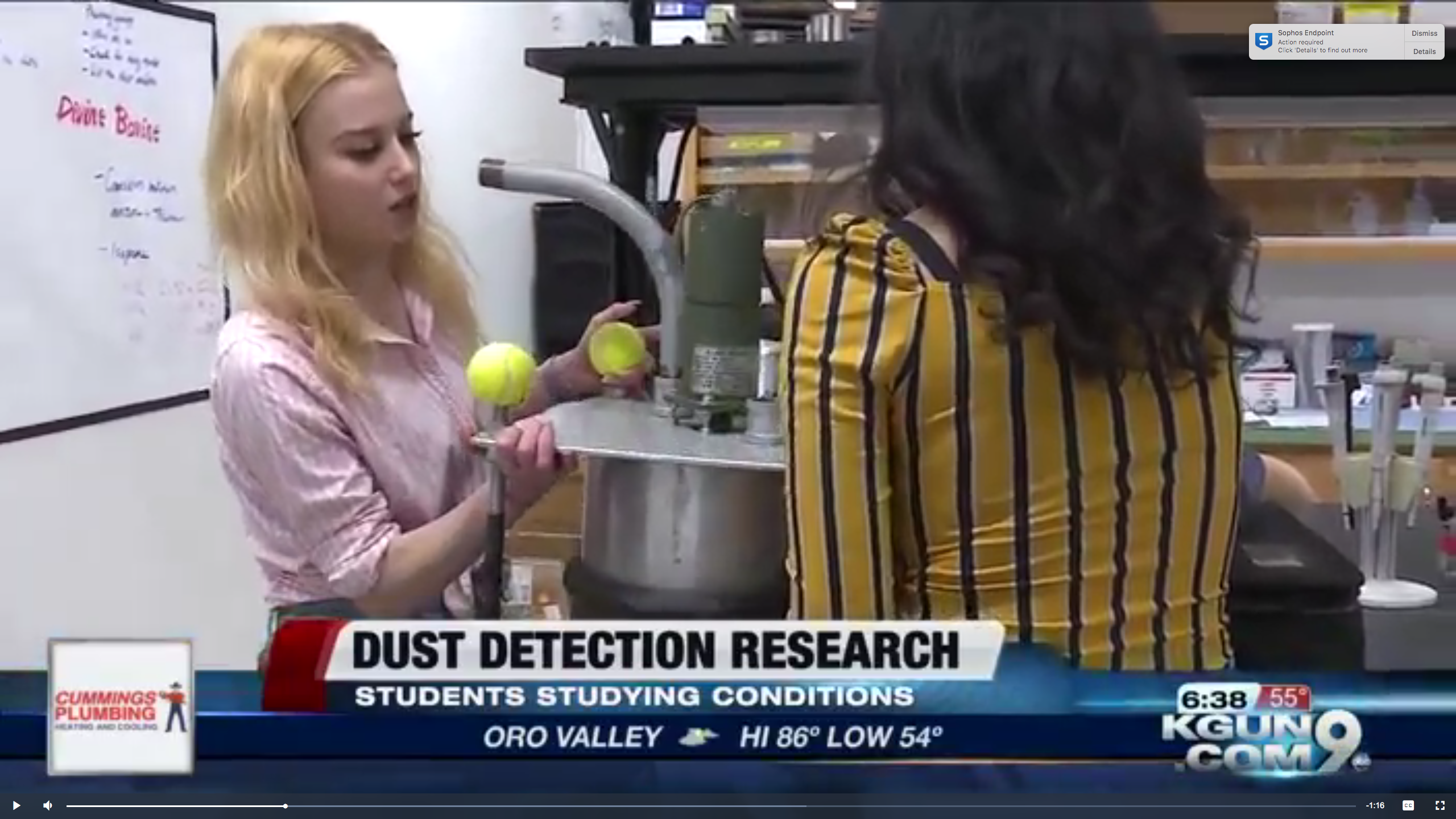UArizona Space Grant Interns and Mentors Publish Article!

Outdoor/Indoor Contaminant Transport by Atmospheric Dust and Aerosol at an Active Smelter Site
Authors: Tania B. Rodríguez-Chávez, Kyle P. Rine, Reman M. Almusawi, Ruby O'Brien-Metzger, Mónica Ramírez-Andreotta, Eric A. Betterton & A. Eduardo Sáez
Download the article here: https://link.springer.com/article/10.1007/s11270-021-05168-2
Abstract:
Activities associated with mining operations including smelting, ore handling, and mine tailings management have been identified as sources of dust and aerosol that may contain metal and metalloid contaminants, such as lead (Pb) and arsenic (As). Previous studies on contaminant transport have concentrated on the potential impact of these particulate emissions in outdoor environments. The purpose of this study were (i) to quantify the effect of dust and aerosol particle size on contaminant transport from outdoor-to-indoor environments and (ii) to document the changes in particle chemical composition during transport through the outdoor/indoor barrier. Outdoor and indoor particulate samples were collected at a high school equipped with mechanical air filtration systems from 2016 to 2019. The school is located near a set of mine tailings and an active copper smelter in Hayden, Arizona. Particle size segregated samples were collected using a ten-stage micro-orifice uniform deposit impactor (MOUDI). Results show that airborne fine particles (aerodynamic diameters less than 1 micron) can penetrate to the indoor environment but in a reduced amount due to mechanical filtration. Aerosol in the fine fraction particulate air concentrations was around 50% of the corresponding outdoor values, but their mass concentration of contaminants was similar to outdoor values. Indoor coarse particles (>1 micron) comprised close to 20% of the levels found in outdoor coarse particles. These results highlight the need to consider the impact of particle diameter when assessing indoor exposure and potential health effects in communities living under the direct influence of mining and smelter activities.

